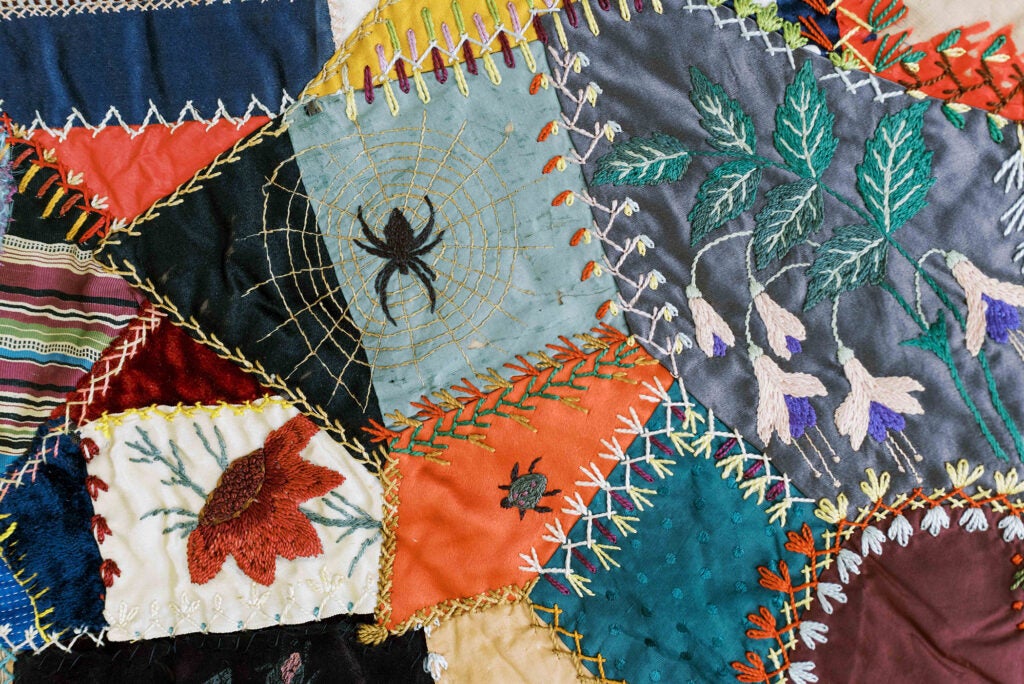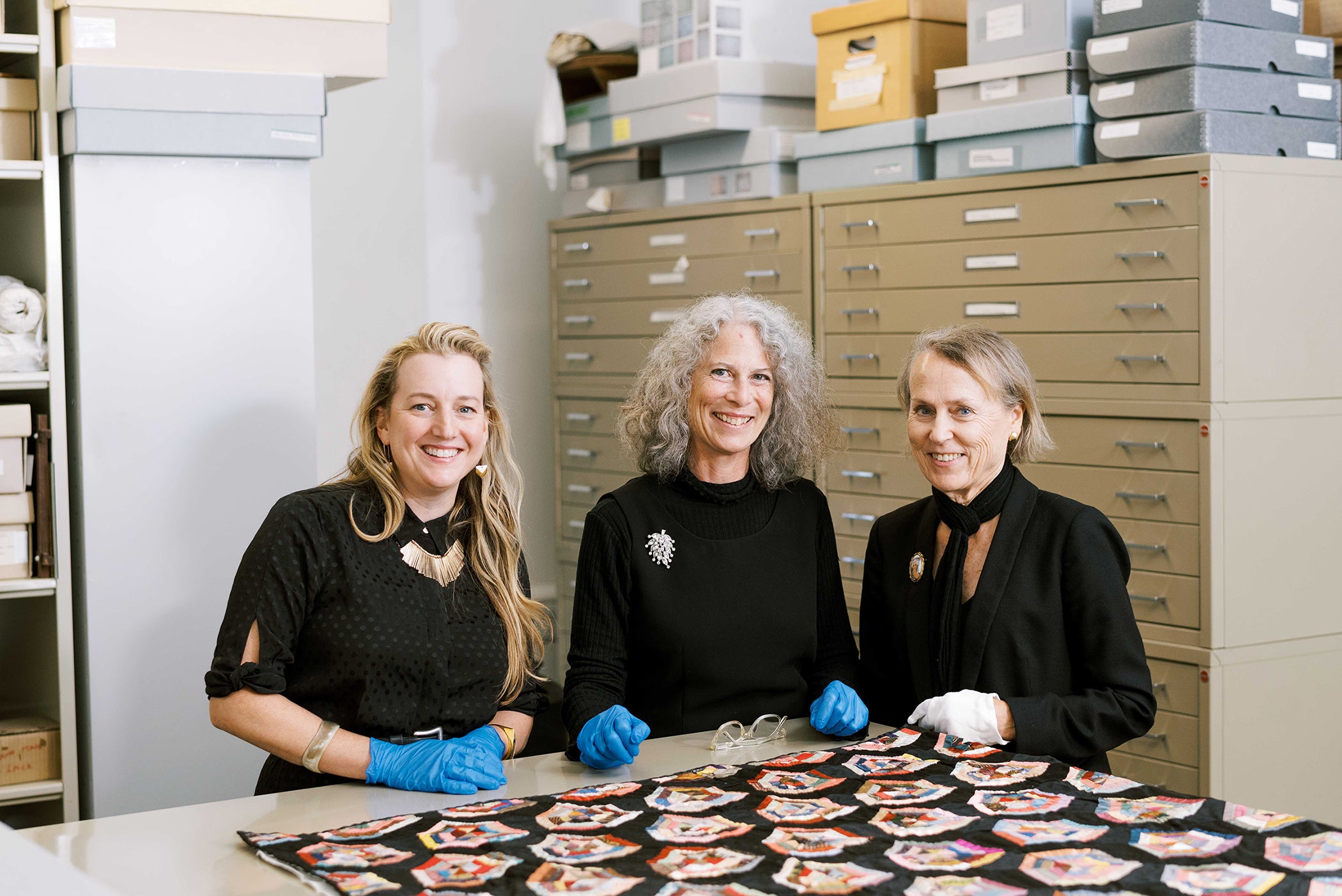KINGSTON, R.I. – Feb. 7, 2023 – If you build it, they will come, says Linda Welters. The University of Rhode Island professor in Textiles, Fashion Merchandising and Design isn’t talking about a baseball field built in some cornfield. She’s talking about the state quilt documentation project that she led in the 1990s.
The project included all of Rhode Island’s 39 cities and towns, spurring hundreds of people to come out and bring their quilts – family heirlooms, some nearly two hundred years old. In all, the project reviewed 886 quilts, documenting their physical features and origin stories.

“The project went through most of the ’90s,” said Welters, “but two decades later we’re still known for historic quilts.”
For anyone who’s forgotten or missed it, they can read about the project in the latest issue of Quiltfolk. The high-end, quarterly quilting magazine features a story on the documentation project – and two others centered at URI – in Issue 25, which looks at quilting in Rhode Island. The stories not only highlight URI’s scholarly work, they showcase its Historic Textile and Costume Collection, which contains more than 80 quilts and quilt blocks.
“It’s nice to be recognized for our collection and I’m happy that the publicity gets out,” said Welters, director of the collection. “But we’re here as a resource not just for the students and faculty but for the community. We love it when people come in and visit. With the Quiltfolk coverage, already some groups are booking weekends to come in and see what we have.”
Last summer, editors from the magazine made two trips to Rhode Island, including visiting Welters’ home. (The magazine’s cover, in fact, features a quilt draped over a wingback chair in her house.) Along with the documentation project, the issue includes stories on a past research project conducted by a graduate student and a new initiative to compile the stories behind eight quilts in URI’s collection.
URI’s quilt documentation project had a lot going for it to attract Quiltfolk’s interest, Welters says.
While other states have held documentation projects, most have been conducted by local quilting groups – not state universities. Along with that, there was Martin Bide, a URI chemist and professor of Textiles, Fashion Merchandising and Design (since retired), who lent his expertise in the science of textiles to the URI project, along with Rhode Island being the birthplace of the Industrial Revolution and home to numerous textile mills.
“Our project focused on the technology behind the development of fabrics that went into quilts in the 19th century,” she said. “There were several people here who had a background in quilts, including textile conservator and professor Margaret T. Ordonez, who’s now retired. So, we decided to do this project. We trained volunteers from around the state to help document the quilts. Then we scheduled documentation days at libraries around the state.”
Welters had no idea what to expect. There was no internet, so they relied on local papers and historical societies to get out the word. But the first day quickly revealed the interest in the initiative. Eighty-eight quilts, some from the late 18th century, were documented. One from that first day was eventually donated to the University’s collection.
Along with the documentation sessions, URI hosted a half dozen local exhibitions of the quilts while the project was underway and held its last exhibit in 2014 at the New England Quilt Museum. The project resulted in a book, “Down by the Old Mill Stream: Quilts in Rhode Island,” edited by Welters and Ordonez, and published by Kent State University Press in 2000.
Quiltfolk’s Rhode Island issue also includes a story about research conducted by Katy Williams-O’Donnell, a graduate student at URI at the time. Williams-O’Donnell spent several years piecing together the origin story of a late 17th century quilt from a handful of small quilt blocks. The English blocks, part of URI’s collection, had changed hands over the decades. The quilt from which the blocks came was ultimately disassembled and the pieces placed in various museums around the U.S.
“Katie ended up going to all four places to view the blocks,” Welters said. “Just by chance, the center medallion of the quilt was put up for auction. Another student, Susan Day, who’s friends with Katy saw it on the auction site, so Katy was able to go and see it. It’s got a man and a woman on it with the date 1697. It’s one of the earliest examples of quilting.”
The magazine also features a new project launched last summer to collect the origin stories behind eight quilts in the URI collection. Welters, Susan Jerome, collections manager, and Rebecca Kelly, an adjunct professor in TMD, met several times last summer to research and write the stories for the project, “Every Quilt Tells a Story.”
The project will be presented during a lunchtime discussion Wednesday, Feb. 8, at noon in the Multicultural Student Service Center’s Hardge Forum. Hosted by the Center for the Humanities, the presentation will include a preview of a two-part short film on the project. A team of three URI students shot and edited the film.
The eight featured quilts include one made by a man, who won a prize at a local fair, and a quilt made entirely of wool, even the thread holding it together, Welters says. There’s also a beautiful crazy quilt – a quilt made of random-sized pieces embroidered together.
The stories behind the quilts make them more than just bedspreads. “You can look at them for their physical beauty but there’s a lot more you can say about them,” she said. “Some of them aren’t necessarily the most beautiful, but they have a lot to say about the way they’re put together and who made them.”

